 |
 |
 |
Dunmanway Heritage CentreHow a team of volunteers created their very own heritage centre in West Cork.
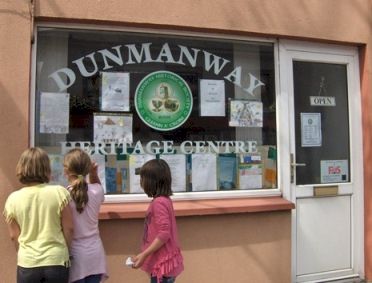
Dunmanway Heritage Centre organises project with local schools What is less well-known, and earns it a place on the genealogical map, is that this town – population just 2,377 at last years census – has its very own Heritage Centre. This Centre isnt part of the Irish Family History Foundations island-wide network of research centres. Nor is it attached to a museum or other publicly funded institution. Dunmanway Heritage Centre is the creation of the town's Historical Association and it is operated, manned and nurtured by its members. Centrally located on Main Street, just a stone's throw from the market square, it is entirely independent of any affiliations and receives no local authority or other state funding. As Pat McCarthy, one of the Associations founders, explains, maintaining the premises is one of the groups biggest headaches. When we first started we hadnt a shilling, but we were lucky to receive free accommodation just along from the current premises. Unfortunately, we had to move after about four years and now pay an annual rent of 2,500, which takes a big lump out of our budget. And then theres also light and heating. Since the Centre is open five hours a day, that tots up to a fair sized bill. So how does the group keep afloat? 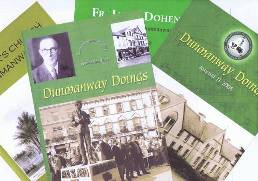 Pat shows me a sizeable display of books published by the society, among them two series called Dunmanway Doings and Dunmanway Pictorial Past. Crammed with articles and photos about different aspects of the towns history and inhabitants, these softbacks are written by members of the Association and sold either in the Centre or by local stores. They are the reason we keep our head above water, says Pat. They cost a lot to print and we dont get sponsorship for them. Instead, local shops sell them for us without taking any commission. Were extremely grateful for that support because its the book sales that pay our rent. Not only do these books help keep Dunmanway Heritage Centre open, they are also essential reading for anyone with links to the area. They are full of detail, names and old photos, and could only add to a family historians knowledge of how his or her ancestors from Dunmanway lived. Theres a full list of publications on the Associations website. The Heritage Centre is also an essential stop for any researcher visiting the area. Theres nothing quite like studying Griffiths Valuation and local maps with someone whos really familiar with the names of the townlands and their history. And Pat is quite likely to take you himself to the old homestead or to meet some likely cousins if they can be identified. He stresses that researchers must do some homework before they arrive. Its impossible to help someone without some names and dates. 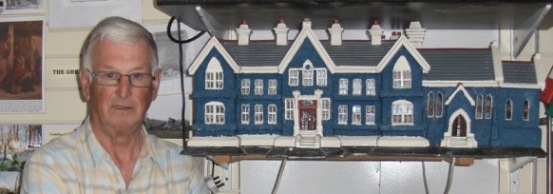
And plenty of people do tap into it. Some will happily take hours of the volunteers time and walk away with more historical or genealogical facts than they could have dreamed of. Unfortunately, in their delight they often fail to register that a donation might help to keep this wonderful service going. While this must be disappointing, its not something the folk at Dunmanway Heritage Centre choose to dwell on. Pat prefers to emphasise the positive, such as the generosity of one of his friends, Micheal Coughlan, who now lives in London. You see all these white folders? he says, indicating shelves at the back of the Centre, stacked with white ring binders. He spent years and years studying his family history and, having published it all in a book, he sent us all of his research materials. And he keeps sending us books, some of them heavy hardbacks, so that we now have an excellent genealogy and local history library here. Its marvellous. Hes been very good to us. Although there is so much of interest here for genealogists, they are not the only target audience. The Centre also plays a leading role in the local community. In addition to its lecture and outing programme for members, the Association runs a local history competition through a nearby school and creates window and wall displays of the childrens projects. 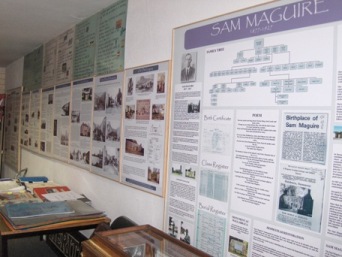 Stimulating an interest in history in the youngsters is high on Dunmanway Heritage Centre's agenda, and there are plenty of fascinating artefacts and displays to capture the imagination of any visitor, young or old. Professionally-produced display boards show local landmarks in years gone by, historical maps of the towns shops, and the detailed story of Sam Maguire. Other treasures and curiosities include a copy of the book detailing every penny donated and spent on building St Patricks RC chapel in the 1830s, and a black shawl or cape of the kind that women wore well into the 20th century, which Marla was happy to model for me. A photo of two NASA astronauts also hangs proudly on the wall. One is Michael Collins, the spaceship commander who orbitted the moon while Neil Armstrong and Buzz Aldrin took their great leap for mankind. The other is Eileen Collins, the first female pilot and first female commander of a Space Shuttle. Both have ancestors from Dunmanway, and both have visited the Heritage Centre. Im sure that, like me, they were hugely impressed with the enthusiasm, commitment and hard work invested by the volunteers to keep this facility open. Dunmanway Heritage Centre is a remarkable achievement, and could well be used as a successful model for other small towns that want to stimulate interest and pride in their localitys past and present. Address: Main Street, Dunmanway, Cork.
|
Famous folk from Dunmanway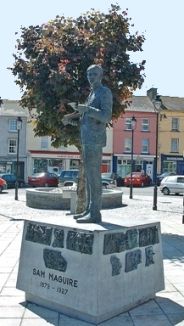
Working in the British Civil Service in London, he had the perfect cover for his IRB activities and his position as Lieutenant-General of the IRA and its Director of Intelligence in Britain. He recruited his colleague Michael Collins into the movement and in his Post Office position was able to intercept official state correspondence and other vital confidential despatches. It is thought that his activities were eventually discovered and he was imprisoned until 1923 when he returned to Ireland. He worked briefly for the Post Office in Dublin before returning to Dunmanway where he died of tuberculosis in 1927 aged 48.
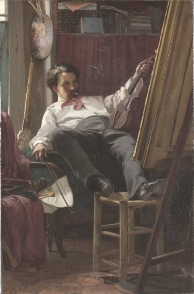
He travelled to New York and in France before returning to Ireland. He died in 1895 while trying to save a child from an approaching train. The painting above is a self-portrait.
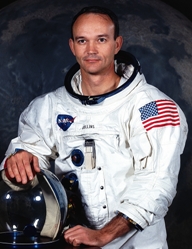
His grandfather, Jeremiah Collins was from the town and emigrated along with his parents and siblings in about 1862.
The traditional cloak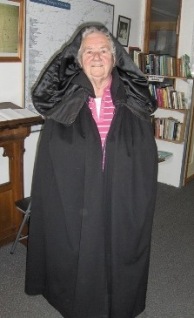
Cloaks such as this were traditionally given to a bride by her mother. They were worn right into the first half of the 20th century, and Maura herself can remember a woman in Dunmanway who always wore one. | |
|
|
||
|
| Home Page | Disclaimer | Contact |Sitemap|Privacy Policy|
By Claire Santry, Copyright©
2008-2020 Irish-Genealogy-Toolkit.com. Dedicated to helping YOU discover your Irish Heritage.
|
||